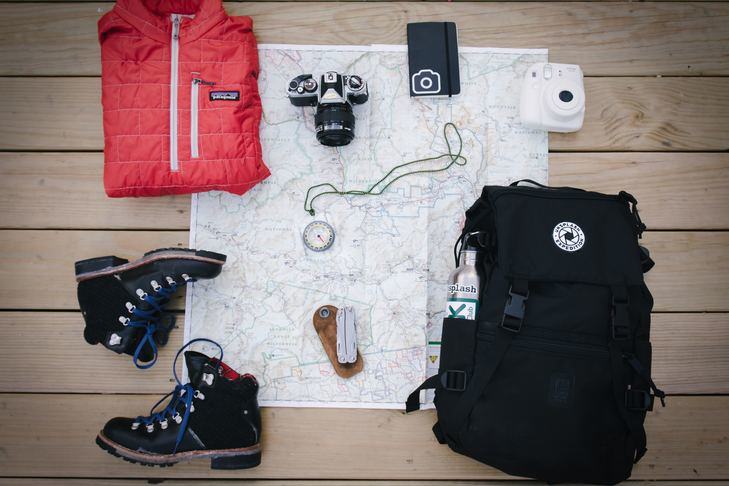Disruption and design
Myths, hype and reality in online education
From people to pedagogy
1.14 Week 1 summary

You’ve now reached the end of Week 1 – this is a good point for you to stop and reflect on the topics covered so far.
The early discussion of the myth that education is ‘broken’ and technology is its disruptive saviour that was covered in the first part of Week 1 sets the tone for the rest of the course. It is a narrative that we will unpick and reassemble in each of the weeks ahead, while also considering other myths related to online education.
Looking ahead, Week 2 explores ways of making disruptive innovations both accessible and inclusive. You’ll be introduced to some strategies that should help you ensure that disabled learners are enabled to participate equally in online learning opportunities. As such, Week 2 covers a vitally important aspect of being an online educator – ensuring that innovation in education does not deny the transformative power of education to people who may already be facing other barriers to participation in society. As authors of this course, we are particularly keen that you take away the skills and awareness developed in Week 2, and are able to apply it in your own teaching.
Week 3 builds on the theme of ‘disruptive innovation’ in a different way and also extends your study of learning design. You’ll investigate strategies for evaluating the claims made about educational technologies. These strategies will help you to navigate the huge array of technology products and teaching approaches competing for your attention and can be employed within the learning design process.
Week 3 also introduces the process of evaluating your own (and others’) online teaching – an important stage of the learning design process. You’ll explore how to write effective research questions that will provide a focus for such evaluations and investigate some of the ethical considerations involved in online research.
Finally, Week 4 shifts focus from the learner to you, the educator. Prominent edtech blogger and academic Professor Martin Weller will guide you through an exploration of how educators can control and develop their online identity, and support wellbeing online. Having an online presence can allow you to contribute to the global conversation about educational innovation, allowing you to share your knowledge and experiences with others. This, in turn, can be a powerful means of shattering some of the myths you’ll encounter in this course.
In some ways being an online educator is parallel to going on an expedition (hence the photo above). It requires considerable advance planning and detailed research to choose the best tools for the job. This, in turn, will involve assessing competing claims about the quality and effectiveness of those tools. Also, it’s important to keep relevant skills up-to-date for the benefit of all involved. Hopefully, studying this course will contribute to all of these areas.
References
Conole, G (2008) New Schemes for Mapping Pedagagoies and Technologies, Adiadne Issue 56. Available at http://www.ariadne.ac.uk/issue/56/conole/ (Accessed 13 December 2023)
Cooper, A. (1999) The Inmates are Running the Asylum - Why High-Tech Products Drive Us Crazy and How to Restore the Sanity, SAMS publishing.
Educateuse. (2025). Our Mission. Available at https://www.educause.edu/about/mission-and-organization (Accessed 06 February 2025).
Farrow, R. (2015) ‘Open education and critical pedagogy’, Learning, Media and Technology, vol. 42, no. 2 [online]. Available at https://doi.org/10.1080/17439884.2016.1113991
Fawns, T. (2022) ‘An entangled pedagogy: Looking beyond the pedagogy - technology dichotomy’, Postdigital Science and Education, vol. 4, no. 3, pp. 711-728.
Ferguson, R. (2019) Pedagogical Innovations for Technology-Enabled Learning. Commonwealth of Learning, Burnaby, Canada.
Kukulska-Hulme, A., Bossu, C., Charitonos, K., Coughlan, T., Deacon, A., Deane, N., Ferguson, R., Herodotou, C., Huang, C-W., Mayisela, T., Rets, I., Sargent, J., Scanlon, E., Small, J., Walji, S., Weller, M., & Whitelock, D. (2023). Innovating Pedagogy 2023: Open University Innovation Report 11. Milton Keynes: The Open University. https://www.open.ac.uk/blogs/innovating/ (Accessed: 22/01/2025)
Hansard (2023) Grand Committee: Educational Technology 23 November 4pm [online]. Available at https://hansard.parliament.uk/Lords/2023-11-23/debates/507ffa6e-c43d-45bc-aa0e-77d9197c6068/GrandCommittee (Accessed 13 December 2023)
Marshall, C. (2011) Whatever happened to Second Life? Available at https://www.techradar.com/news/internet/whatever-happened-to-second-life-1030314
Scanlon, E., Sharples, M., Fenton-O’Creevy, M., Fleck, J., Cooban, C. and Ferguson, R. (2013) Beyond Prototypes. TEL Research Programme, London.
Sharples, M. (2019) Practical Pedagogy: 40 New Ways To Teach and Learn. London: Routledge.
Mor, Y. and Craft, B. (2012) ‘Learning design: reflections on a snapshot of the current landscape’, Research in Learning Technology, vol. 20. DOI: 10.3402/rlt.v20i0.19196
Acknowledgments
Myths, hype and reality in online education Case study: Second Life
Applying accessibility guidelines to online teaching Introduction to accessibility guidelines
PhotoDisc/Getty Images
Linden Labs
Courtesy of Tate Digital © Tate, London, 2018
Copyright © [2015] World Wide Web Consortium, (MIT, ERCIM, Keio, Beihang). https://www.w3.org/copyright/document-license-2015/
Developing a Research Question
Laurier Library This file is licensed under the Creative Commons Attribution Licence http://creativecommons.org/licenses/by/3.0/
Myths, hype and reality in online education: The students of the future
Educause, This file is licensed under the Creative Commons Attribution Licence http://creativecommons.org/licenses/by/3.0/
Online research ethics Ethics and the ‘murky’ public/private distinction online
Second Life © Linden Research, Inc. This file is licensed under the Creative Commons Attribution-Share Alike Licence http://creativecommons.org/licenses/by-sa/3.0/
Who am I online? Visitors & Residents video
Visitors and Residents by jiscnetskills, This file is licensed under the Creative Commons Attribution Licence http://creativecommons.org/licenses/by/3.0/
